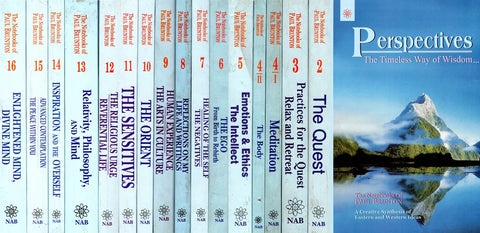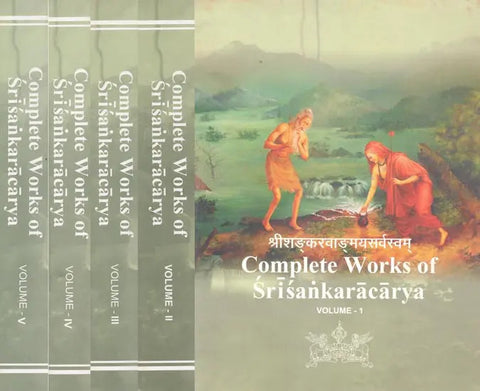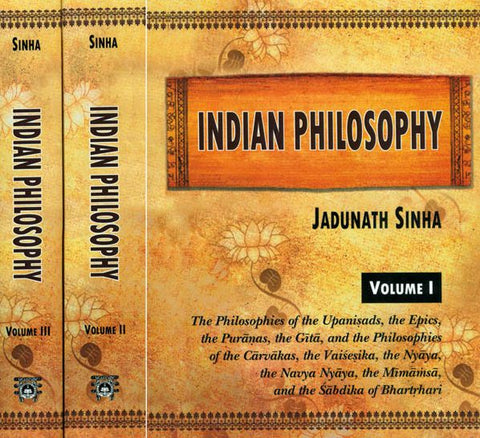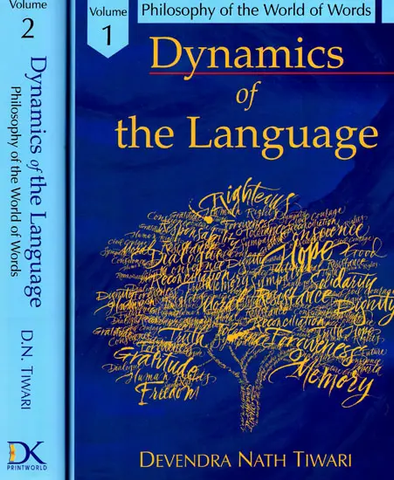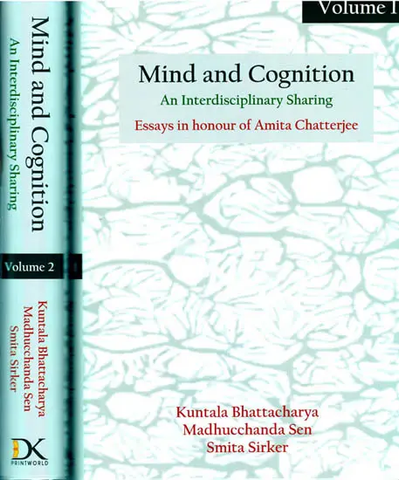Your cart is empty now.
This book by Dr. Desmarais is by all means a positive contribution to the field of Yoga, Indology, and cognitive neuroscience. It covers Eastern and Western, ancient and modern, religion and metaphysics, psychology and epistemology, as well as the cultural heritage of these.
The book is arranged into six chapters using our common concept of the show as a metaphysical stage: getting ready for the show; entering the theatre; taking the stage; all the world as stage; following the plot; thickening of the plot; and finally, the lights come up. This has its source in the Samkhya metaphor of prakrti as analogous to a divine actor, on the world stage and in a cosmic drama. Another symbolic metaphor that comes before our mind is that of Ardhanarinatesvara of Lord Siva, depicted as the Cosmic divine Supreme actor endowed with half-female in his person. The reader, the spectator or audience member, symbolizes the Purusa of Samkhya and Yoga.
The author, using this structure, provides an excellent exposition of the contents of the Yoga-sutra (YS) text of Patanjali; serially, with all its major technical terms and concepts. Dr. Desmarais, with utmost care and balance, focuses on mind, consciousness, and identity as the central trinity. Within this, the complex issue in mind and its relation to matter is considered from a number of dimensions in the YS.
Accompanying this explanation of mind, consciousness, and identity in the YS, is a parallel exposition of these topics from the perspective of the cognitive neurosciences today. The book successfully fulfills the aim of bridging the gap between what belongs culturally to the West, and what belongs to the East. The one side exhibits the material objective character, the other subjective spiritual-the two-dimensional profile of a man. The task is certainly not an easy one. But Dr. Desmarais remarkably has accomplished this task. With both traditions, the author displays a very close familiarity. This is due to two strongholds. One is her semantic and etymological approach to technical terms in Sanskrit, the other is her’ clear integral vision. Dr. Desmarais knows and states that the YS is of an interdisciplinary nature. So also are the cognitive neurosciences. The exposition and the interpretation by her of the important terms are very clear, appropriate, and significant. Among the most noteworthy of these terms are: purusa, prakrti, manas, buddhi, ahamkara, citta, vrttis, nidra (turiya), smrti, samyoga, abhyasa, vairagya, and lastly the kaivalya. In this march she has taken into account important Sanskrit commentaries and translations, modern authors and their interpretations, and, wherever necessary, provides her own brief survey of Yoga tradition before and after Patanjali: through Vedas, Upanisads, Gita, up to Jainism and Buddhism-Yoga being the common internal disciple for all. Similarly, she provides an overview of relevant topics in the cognitive neurosciences to date. Dr. Desmarais’ treatment of the subject, so complex and wide, is judicious, positive, and constructive in spirit.
The author is well nigh aware of the internal difficulties while paraphrasing and explaining terms, and tries to minimize these by descriptively defining and interpreting the concepts. No less aware is she is the external difficulties that one faces while switching over from one language to another that belongs to a distant family, such as the Sanskrit (ancient India) and English (modern European) languages, subjects, and traditions she declares rightly that exact translation of Sanskrit terms is not possible, very often the words need to be accepted as they are and supplemented with the words need to be accepted as they are and supplemented with the nearest translation possible or a word approximately synonymous in meaning. Dr. Desmarais’ resolution of these difficulties is well acceptable. One of her observations about Yogic research, assessment, and evaluation needs to be noted and highlighted. Yoga is a practice, a field of experience subjective in nature. The number of cases for research is very small compared to other fields. The experience is ever-changing as for instruments, they have limited capability, a limited range of applications (confined to part not to whole), and also are subject to interpretation. The results often are not consistent or similar, but sometimes contradictory, or controversial. While analysis based upon research in the neurosciences on Yoga is interesting, under such conditions much of it must necessarily remain hypothetical.
Such limitations come even clearer to light if we consider the issue of bi-laterality. In living beings respiration mechanism is bilateral. Bi-laterality is in fact neglected even in modern medicine. Instead, we treat the body only as a whole. The tests carried about of blood, sugar, cholesterol or the measurements taken of blood pressure, temperature, resistance, or other neuro-cognitive responses are not bilateral, nor simultaneous, so experimental results show discrepancies or anomalies here as well. Thus there is a need to understand and develop bilateral anatomy, bilateral physiology, bilateral pathosymptomology and bilateral therapeutics to do justice to not only Yogic practices but to any prescription of medicine, diet, and lifestyle (ausadha, anna, vihara), to be corroborated by in vivo (clinical, subjective) and in vitro (objective, laboratory) experiments. The total picture and total perspective arising from these developments would be more meaningful.
In this context, it has to be noted that there is a deep-seated problem about the mind, as a substance/category, its location, function, and nature. In fact, this is true of all the inner faculties. Modern science does not officially accept them as there is no objective proof for their existence or location, nor does it accept them a priori like previous science (classical or ancient), or like Indian sciences or most of the schools of philosophy. How, therefore, can these experiments be made? So the inner faculties are beyond experiments to date. The research is confined only to the nervous system and structural parts of the brain. Inner faculties are functional, but the brain, nerves, etc. are structural. Only by mutual correspondence and inference can we assert their existence, contents, and their meaning. This involves all the fundamentally important issues: structure-function, subjective-objective, experience-experiment, and a priori-a posteriori.
Modern medicine (life sciences, cognitive neurosciences) follows modern science, therefore it does not accept inner faculties officially, but could not escape them in practice or in clinics. This is the situation in mathematics: AB - BA, whose converse may or may not be true. Yoga and Ayurveda took the positive view, accepting the inner faculties as a priori and also functional in character, yet further assigned material or substantial status to them. Their location has been assigned to the heart, in light of meditation and contemplation (subjective experience and experiment with eyes closed generally), while the brain (head) is accepted as a place of manifestation (indriya-sthana), a field of sensory perceptions; in fact, the whole body is an extension of the same.
Once this position is accepted, then it is within the realm of physics and the laws of physics. Functional modification, expansion, extension, mutation, and transformation is then possible. Rasayana and vajikarana (revitalization, rejuvenation, stimulant) are the two classes and cyavanaprasa, brahma-rasayana, bhallataka-rasayana and all mercurial and sulphur compound products called Bhasmas, are the examples in this direction. Kayakalpa i.e. the technique and the procedure to transform the psychosomatic person aimed at this. Khecharivati, and Yogic Khecharimudra run parallel to achieve levitation, aerial flight etc. Patanjali’s Sutra in which the author has elucidated "jaty-antara-parinamah prakrty-apurat," is noteworthy in this context. Modern genetic engineering would make this claim objectively possible tomorrow. It would be a culmination of cognitive neurosciences when Quantum Field Theory practically achieves Grand Unification. If modern science positively incorporates observer and inner faculties, in addition to genetic engineering, there certainly would be the emergence of the Great Grand Unified Theory of modern science.
Yoga subjectively, and Ayurveda, objectively on an individual, and on a very small scale, no doubt, have paved the path in this march. They displayed not only a model, not only a method but also a procedure, which would remain a psycho-physiological standard, parallel to modern scientific achievements.
The technical term plasticity (or neuroplasticity), used by the author, when abstracted would be analogous to fluidity i.e. the field of Fluid Mechanics, that would cover hydrodynamics, thermodynamics, aerodynamics, and space dynamics. From this, we can correlate the earth, water, heat, air, and ether of ancient sciences, to a great extent. If this is accepted, then the role of air (pneuma), the bridge between all the rest of the elements and principles, would become more prominent and pronounced. Then further the role of vayu (prana, breath) as a link, a bridge between microcosm (bilateral respiration mechanism in living being) and macrocosm, would become clear. As Nyaya, Yoga, and Ayurveda accept, air accommodates thermal and hydraulic properties as a continuum (heat-cold), and spatial properties also. Operationally then, air appears like a complex conjugate that unifies QM and GR theories harmoniously. This is the message of Yoga and Ayurveda to be precise. Modern science has to elevate itself to that height, which would imply an integral version of it, by accommodating religion, metaphysics, philosophy, and epistemology. Dr. Desmarais’ book is definitely a step ahead in this progression. Therefore aptly she states that Patanjali’s Yoga-sutras stand for a transformative approach to human resource development. Changing Minds is the title and aim also of the book.
| Acknowledgments | ix | |
| Foreword | xiii | |
| Abbreviations | xix | |
| Introduction: Getting Ready for the Show | 1 | |
| CHAPTERS | ||
| 1 | Entering the Theatre | 7 |
| 2 | Taking the Stage | 23 |
| 3 | All the World’s a Stage | 83 |
| 4 | Following the Plot | 123 |
| 5 | The Plot Thickens | 177 |
| 6 | Lights Up | 213 |
| References | 227 | |
| Index | 247 |
Delivery and Shipping Policy
- INTERNATIONAL SHIPPING
- Rs.1000-1100/kg
- ESTD. Delivery Time: 2-3 weeks (depending on location)
- Bubble Wrapped with Extra Padding
- NATIONAL SHIPPING
- NCR: Rs. 30/half kg
- Standard: Rs. 80/half kg
- Express shipments also available on Request
- ESTD. Delivery Time: Ranging from 1-4 days up to 7 business days (Depending on your choice of Delivery)
- TRACKING
- All orders; national or international, will be provided with a Tracking ID to check the status of their respective orders
- Depending on the Shipping Service, Tracking ID may be used on their respective tracking portals
Frequently Asked Questions (FAQs)
Domestic Shipping: 3-4 Days (after shipping)
International Shipping: 1-2 weeks (based on your location)
You will receive an email once your order has been shipped or you can email us if you didn't receive tracking details (info@mlbd.co.in)
Every book that we sell is the latest edition except all the rare books
Yes, we do provide free shipping, only on domestic orders (within India) above Rs.1500


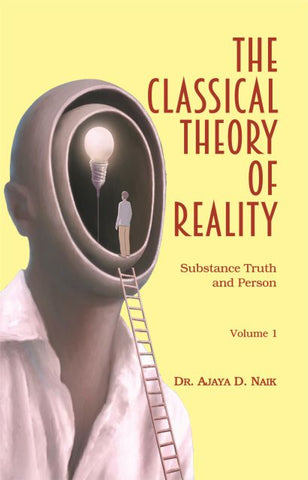
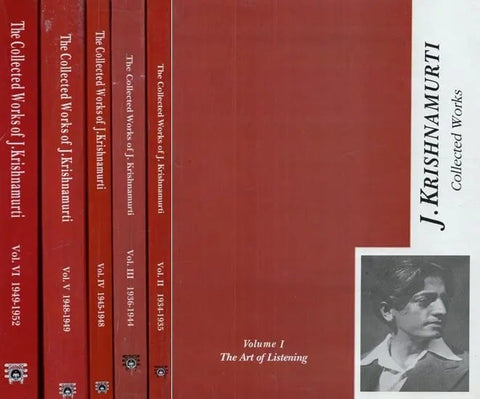

![A HISTORY OF INDIAN PHILOSOPHY [5 VOLUMES] by Surendranath Dasgupta](http://www.motilalbanarsidass.com/cdn/shop/products/HISTORYOFINDIANPHILOSOPHY_large.jpg?v=1675238163)

